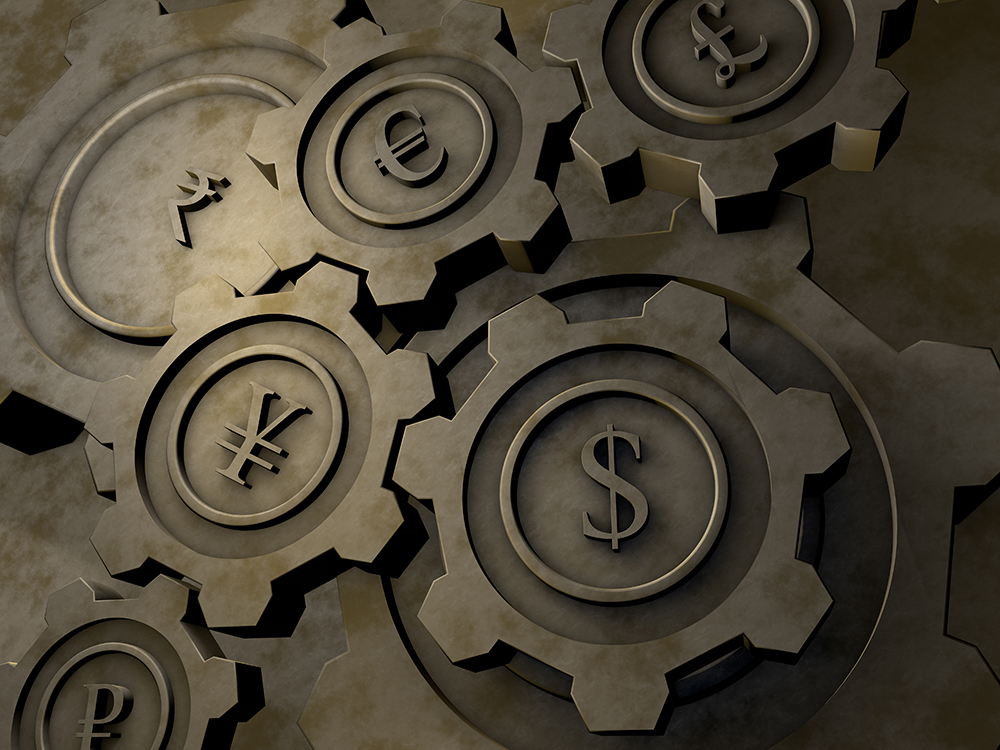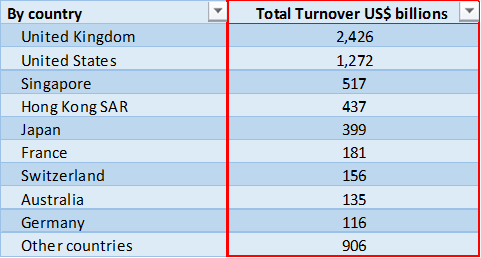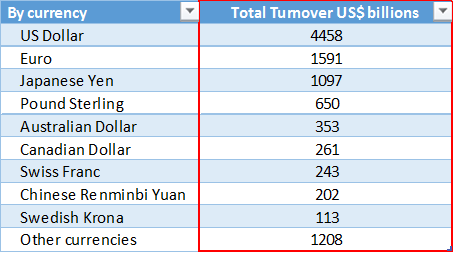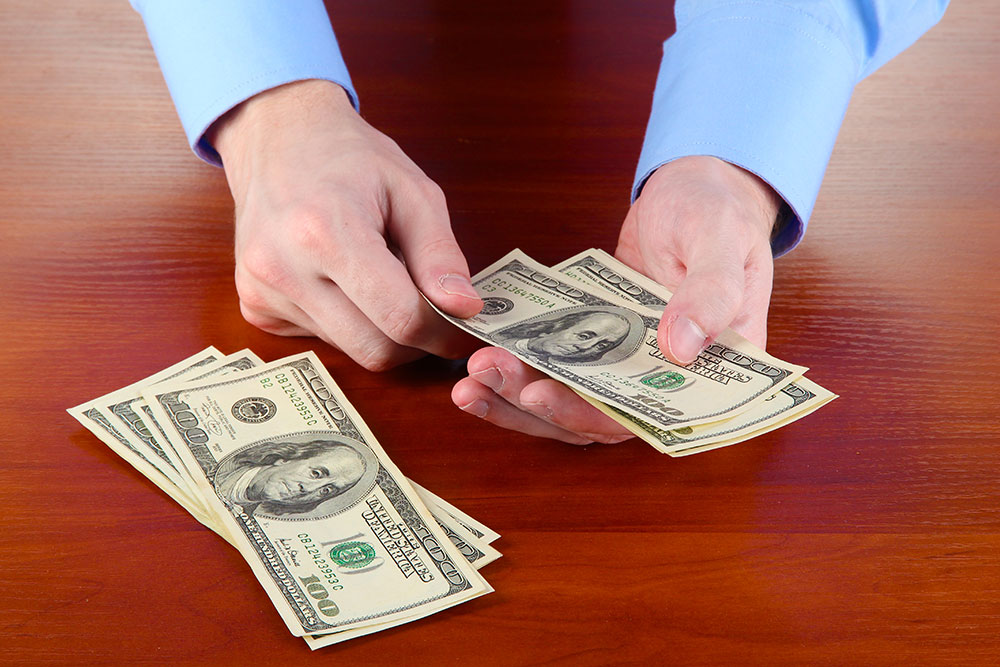05.04.2017
How Forex Pairs Work & Which to Trade?
 Forex trading effectively involves the exchange of one currency for another.
So there are by definition two components (or a pair of currencies) in every trade.
The term Forex pair simply reflects this duality. Forex rates (the prices of Forex pairs) move continuously, as they respond to new information and drivers, alongside changes in investor sentiment and the natural ebb and flow of supply and demand that is common to any marketplace.
Forex trading effectively involves the exchange of one currency for another.
So there are by definition two components (or a pair of currencies) in every trade.
The term Forex pair simply reflects this duality. Forex rates (the prices of Forex pairs) move continuously, as they respond to new information and drivers, alongside changes in investor sentiment and the natural ebb and flow of supply and demand that is common to any marketplace.
Balancing Act
If investor sentiment around a particular currency is positive, then that positivity can create additional demand (buyers) for the currency. If that extra demand outweighs the available supply of that currency, then the price, which sellers demand to part with the currency, will rise. Conversely if new information emerges that creates negative sentiment around a currency, demand for that currency may fall. Whilst the supply (the number of sellers) will rise. In these circumstances buyers will reduce the amount they are prepaid to pay to own the currency or withdraw their bids and the price of that currency will fall. Of course as we established above, in Forex trading the value of a given currency is reflected in changes to the relative value of that currency, against a counterpart or pair.Nature of a Forex Pair
Let's take a closer look at what these changes mean practically and how a Forex pair works and what it represents in practise. So what do we mean when we say that the value of one currency is measured by the change in its relative value in another currency. Well that is simply how Forex pairs work, or indeed what they are for. The exchange rate between the British Pound Sterling and the US Dollar reflects the relative values of each currency, compared to the other, at a given moment in time. if you want to think about that in a different way then think of it like this: The exchange rate reflects the amount of goods and services that a unit of currency A will buy you in currency B. So at an exchange rate of US$ 2.00 to the Pound, a seller of a single Pound Sterling would be able to buy US$2.00 worth of goods and services in the USA. At an exchange rate of US$1.20 however, the amount of goods and services a seller of a lone Pound Sterling could buy, in the USA, falls to US$1.20, a 40% reduction. Of course the inverse or opposite is true for a seller of a single US Dollar buying goods and services in the UK in Pounds Sterling. This constantly changing relationship is expressed by the Currency or Forex pair known as “Cable”. After the transatlantic telegraph cables that first transmitted exchange rates in the late nineteenth century, between London and New York .The Matrix
As we have noted already changes in sentiment, supply and demand, or the emergence of new information about a currency and its underlying economy, can and will affect its value, relative to other currencies. These changes in value do not happen in isolation however. But rather they take place within a matrix of Forex Pairs and Crosses (Crosses are classically considered to be those exchange rates which do not contain the US Dollar and or more recently the Euro as a constituent). So that a change in the value of the GBP USD pair (Great British Pound US Dollar) is also likely be reflected in the value of the GBP JPY cross (Great British Pound Japanese Yen), the USD JPY Pair (US Dollar Japanese Yen) and the EUR USD pair (Euro US Dollar exchange rate) and so on and so on. In fact if the changes in value are significant enough, they will have a ripple effect across the values of all Forex Pairs and Crosses, no matter how far removed they are from the original currencies. Note that all Forex pairs and crosses are denoted by a specific code or Mnemonic. Which combines the three letter “ISO 427” code for each individual currency. This is the bold annotation we have used in the examples immediately aboveVariable Nature
The scale of any movement in the price of other Forex pairs and crosses will depend on a variety of factors and variables, which include interest rate differentials (both now and in the future), economic performance, as well the nature of their underlying economies plus many more. The sensitivity to and likely direction of these corresponding moves is denoted within a measurement known as correlation. A statistical calculation that is expressed as a percentage or ratio,which in the case of Forex can have either positive or negative values. A high positive correlation between two Forex pairs suggests that change in the value of Forex pair A, will be reflected by a move in the same direction, in the value of Forex pair B. Whilst a strong negative correlation between two FX pairs or crosses implies that change in the value Forex pair C will be reflected by a change, in the opposite direction, in the value of Forex pair D. Correlations between Forex pairs and crosses are variable. To the extent that they can differ significantly depending on the time frames they are measured over, say 10 minute, 30 minute or hourly periods. Or from one observation point to the next, for example new daily, weekly or monthly calculations. What's more not only can the strength of this correlation vary or changeover time, so can its direction.A Dynamic Marketplace
These dynamic relationships between the various Forex pairs and crosses make Forex one of the most exciting markets to be involved with. Presenting traders, as it it does, with countless opportunities on each business day. The skill of the trader is to be able to recognise those opportunities and to interpret what they mean for the prices of Forex pairs and crosses. Simply because, if we understand this information correctly we have the potential to profit from its application or translation into trades. So to return to the example of the GBP USD Forex pair, or exchange rate, used earlier in this piece. If major news breaks which is positive for the US Dollar and negative for the Pound Sterling, it follows that this may also be positive for the valuation of other currencies versus the Pound Sterling. Or put another way, negative for the value of Sterling Forex crosses. As well as being potentially positive for the US Dollar versus its peers, or Dollar pairs. That amounts to a lot of instruments and a lot of potential price changes to consider and track.Which Forex Pairs to Trade
It would be virtually impossible for a single trader to watch and monitor all of these prices, their changes and interactions, simultaneously. Not least because studies show that the human mind, on average, can only focus on or retain information about 6 or 7 things at anyone time. As a consequence of which traders tend to focus on a short list of instruments in which to trade. That list could be a permanent fixture,that focuses on a handful of currency pairs that a trader follows closely and is very familiar with. For example USD JPY GBPJPY and AUD JPY. Or those Forex pairs which regularly exhibit the highest trading volumes such as EUR USD, GBP USD and USD JPY . But equally a trader may prefer to trade what's moving or likely to move on a given day or session. For example if based in Europe and trading the European session, the trader may choose to trade those Forex pairs that have been moving within the preceding Asian session. Hoping to benefit from that momentum, or perhaps to oppose it, in expectation of it fading and the price of the relevant Forex pairs correcting or re-tracing earlier moves. Alternatively the trader may like to be guided by the Economic calendar of events. As there is a regular well documented flow of key economic releases, from both developed and emerging economies. Of course a trader may prefer to look for specific, predetermined signals or indicators, that appear in the charts of Forex pairs and crosses. Of course this creates another potential “logjam” of information and traders will often use a screening tool or system to sort the “wheat from the chaff” leaving them with a manageable number of charts to look at and interpret.Take a Look for Yourself
One of the best ways to get to grips with the concepts we have discussed in this article and get first hand experience of how they act on the prices of Forex pairs and crosses is to open a demo trading account. A completely risk free and free of charge service, that provides users with access to an authentic simulation of the live trading environment. This is an ideal tool with which to try out trading in Forex pairs and crosses. To watch the news and data flow and resulting changes in price and sentiment that creates and to familiarise yourself with chart studies and indicators that can help you to understand how Forex pairs work and which to trade. Back to Previous Page >>05.04.2017
How to Trade Forex & CFDs for a Living Successfully
 Whilst we can't recommend that you become a full time trader because everyone's circumstances are different, the idea may have crossed your mind and if that's what you want to know more about how that might be achieved then read on.
How do I achieve this? Is a question that most “wannabe” or part time traders will ask themselves at one time or another. After all it’s many people's dream to be their own boss and to spend their time doing something that they enjoy and can make money at. There is a simple straightforward answer to this question which is:
Whilst we can't recommend that you become a full time trader because everyone's circumstances are different, the idea may have crossed your mind and if that's what you want to know more about how that might be achieved then read on.
How do I achieve this? Is a question that most “wannabe” or part time traders will ask themselves at one time or another. After all it’s many people's dream to be their own boss and to spend their time doing something that they enjoy and can make money at. There is a simple straightforward answer to this question which is:
“ Make more money than you lose and make enough money to cover your out goings and overheads, whilst increasing your capital at the same time .”Now of course it's much easier to say those words, than to achieve the result they describe. But that description is the reality of what you will need to achieve consistently to successfully trade Forex & CFDs for a living. By now you will have had a chance to reflect on that statement. But don't stop here ! Please Do read on. Because whilst becoming a full time trader won't be easy and will require effort, application and aptitude on your part. It’s not an impossible dream. The good news is that help is at hand. Moreover there are steps you can take to help you achieve your goal.
Understand the Markets
You could quite easily spend your whole life trying to understand the intimate workings of and drivers for the financial markets. And at the end of that process you might still not have reached your goal. Simply because every day can be and is a learning curve in the markets. However you don't need to know the minute details of each instrument, market,the participants and their intimate histories. Rather you need to know and recognise what's important in a given market and how that information affects price. To put that another way imagine you are waiting for a decision on interest rates and monetary policy from the Bank of Japan. You hope to trade Dollar Yen when the news is out. You might like to do hours of background reading about monetary policy and its relationship to the Japanese economy and don't let me stop if you do. However whilst that will be useful background information it may have little or no bearing on what happens to the price of Dollar Yen, when the BOJ news breaks. The things that will have an affect are likely to be factors such as how closely that news matches traders expectations, for the event and how those traders are positioned approaching that event. So if the market is mostly long Dollar Yen (that it is it expects the Dollar to strengthen and Yen to weaken) and it anticipates news, from the BOJ, that should weaken the Yen. For example a cut in interest rates or an expansion of QE. But it doesn't get that news. Then in these circumstances there is every reason to think that the Dollar Yen rate should fall rather than rise. As traders on the long side look to cut or reduce their positions. Whilst those that were short Dollar Yen and expected the Yen to rally, add to their positions and try to cause the longs the maximum amount of discomfort in doing so.Power struggle
Animal spirits drive the markets by quite simply combining supply and demand, together with human emotion and sentiment. When supply is abundant prices can fall. Whilst when demand is in the driving seat, then prices will likely rise. Of course we can substitute the word buyer for demand and seller for supply. Or if you prefer go one stage further and use the term fear as a substitute for supply / sellers and greed as an alternate for demand / buyers. The ratio of Supply to Demand, of Buyers to Sellers, of Fear to Greed is what ultimately drives prices. Think about all the pulling and struggle for supremacy that takes place within a tug of war. Or all the pushing and shoving and battle for dominance that you see in a rugby union scrummage. These are both perfect metaphors for the constant push and pull of the marketplace. In both cases if one team is much bigger than the other, then that team will exert their influence much more easily. But if the teams are more evenly matched, then the team with the better technique will probably carry the day. As as a successful Forex and CFD trader you will need to use your judgement (technique) to decide which team you want to be on, at which point to join that team, and for how long.The Trend is your friend
One way to do this is to spot a price trend, join it and stay with it until ends or changes. The header of this paragraph is a popular saying amongst Technical Analysts, who use charts of price and volume to predict future price direction. The phrase implies that joining a trend is a sensible thing to do. For many participants in the Forex and CFD markets trend following is a cornerstone of their trading strategy. Of course to join a trend you need to be able to identify one. But that need not be as complicated as it sounds. An uptrend can be defined as a series or progression of higher highs and higher lows in the price of an instrument. Whilst a downtrend is quite literally a progression of lower highs and lower lows in that same price. So for example if we are watching a particular instrument,over a series of 5 minute periods. And for each 5 minute period we note the opening price, the high price, the low price and the closing price. We are creating a record of the price action for that instrument. If our record shows that for 5 of the 6 periods we monitored the instrument over, we saw a new or higher high, accompanied by a series of higher low prices. Then we would have identified an uptrend in the price of that instrument. If we saw the opposite behaviour, that is lower highs and lower lows in the majority of the 5 minute periods in our study, then we have identified the existence of a downtrend. Of course what we need to determine is whether these trends will continue and if so for how long. This is exactly the reason that traders create and use charts and add indicators to themFurther Reading
Ten thousand hours ?
Of course there is much more to Successfully Trading Forex and CFDs for a living. But the text above will hopefully serve to get you thinking about what's important to that endeavour and what isn't. Most important of all is the process of becoming an expert. Because that is how a successful (profitable) full time trader should be described. Experience is important and the old saying that it takes 10,000 hours of work to achieve this has some truth in it. However we shouldn’t automatically confuse experience for aptitude or ability. The influential Farnam Street blog makes this point on this very subject.“Put another way, someone with 20 years of experience, might be repeating one year of experience 20 times.”Modern thinking is that we gain can expertise or deep knowledge of a subject or an ability, when we practice and concentrate really hard. Such that the practice pushes us to edge of our competence. It's at this point, that learning takes place, as we master, or gain an understanding of new skills and abilities. Furthermore that it is the setting goals, that are fractionally ahead of our current ability, working towards those goals, through practise, attaining them and then repeating the process with fresh goals that drives this deep learning. By focusing on the important and the essential and ignoring the peripheral, you can, in theory, greatly reduce that 10,000 hour figure. You will need dedication, of course and the time and resources for practise (more on that in a moment) To quote Farnam Street again
If you want to make it there (to expertise) the road is bumpy. It has to be. Only a difficult road will cause you to grow and learn. And you have to personally want to travel this road, because it will be long and if you can’t motivate yourself you’ll never get where you need to be.
Resources
Blackwell Global offers its clients access to Free Demo Trading Accounts .These accounts allow traders to practice trading Forex and CFDs in a risk free, yet highly realistic simulation of the live markets .You can practise trading for as long as you need to. Test strategies and your trading intuition create charts identify trends, plot indicators back test performance and so much more. All without risking any real cash and at no charge. We also offer our customers access to educational guides and articles as well as dedicated research from both inhouse and external analysts. The ancient Chinese proverb from the philosopher and founder of Taoism Laozi says “A journey of a thousand miles begins with a single step” so why not take the first step on trading journey today ? Back to Previous Page >>05.04.2017
Which Forex Markets Open First ?
 Forex markets are open 24 hours a day five days a week. But of course they close for the weekend late on Friday evening London time, or at the end of the business day on the east coast of the USA if you prefer. This begs the question which Forex markets open first each day and where does the new Forex business week start ?
To answer these questions we need to think back to our school geography lessons, look at the map of the globe and consult the world clock.
Forex markets are open 24 hours a day five days a week. But of course they close for the weekend late on Friday evening London time, or at the end of the business day on the east coast of the USA if you prefer. This begs the question which Forex markets open first each day and where does the new Forex business week start ?
To answer these questions we need to think back to our school geography lessons, look at the map of the globe and consult the world clock.
Dateline London
As with most matters related to international dates and timelines the starting point is found in London. But not in the traditional heartland of finance, the City of London. Nor indeed in its much younger neighbour Canary Wharf, whose shining towers are located on the former docks of the Isle of Dogs. In fact to find our starting point we need to head south from Canary Wharf and cross under the river Thames. Whether we travel on the docklands light railway, or walk via the foot tunnel linking Millwall with Greenwich, which opened all the way back in 1902. Once in Greenwich we will need to head through the town and up the hill, to the park beyond. Then onwards to the Royal Observatory and the site of the prime meridian, from which all international dates and times were calculated. This imaginary line, that circumnavigates the globe is humbly denoted, at the observatory, by an unassuming stainless steel strip during the day and the iridescent glow of a laser beam at night, yet it is intrinsically linked to global trade and the development of the modern world.Time out
It was the ability to track and calculate, with precision, the time that you had travelled east or west away from Greenwich, that allowed mariners to accurately plot their position on world's oceans. An ability that facilitated massive growth in both the volume, speed and safety of international trade. Which in turn helped London become the global centre of finance that it is today. All of this is thanks to the work of the British clock maker John Harrison who produced the first reliable working marine chronograph in 1760. Today the usual form of notation used when describing an international date and time is to reference it as being a certain number of hours ahead of or behind GMT or Greenwich Mean Time. A fitting and lasting tribute to Harrison's tireless and timeless work. Back to Previous Page >>05.04.2017
Are Forex Markets Open on Weekends?
 Forex markets are open for business 24 hours a day, for 5 days per week, but this does not include weekends. The market opens in Australasia/ Asia on the later part of a Sunday evening London time but early morning in the far east. The Forex markets then trade continuously until the close of business in New York, around 10.30pm London time, the following Friday*. During these 5 days the Forex market will turnover more than US$25 trillion according to data from the Bank for International Settlements, or BIS, triennial survey 2016.
*Note that closing and opening times may vary due to daylight saving regimes.
To put that figure into context - this means that each week the Forex markets turnover a sum, that is larger than the total GDP of the USA is in a year. US GDP is circa US$17.98 trillion per annum by the way.
During these five day periods millions of Forex trades need to be reconciled and settled and monies paid out and received. Forex market hours are aligned to banking hours across the globe. Banks have historically not opened for business at the weekend and neither do the markets.
Forex markets are open for business 24 hours a day, for 5 days per week, but this does not include weekends. The market opens in Australasia/ Asia on the later part of a Sunday evening London time but early morning in the far east. The Forex markets then trade continuously until the close of business in New York, around 10.30pm London time, the following Friday*. During these 5 days the Forex market will turnover more than US$25 trillion according to data from the Bank for International Settlements, or BIS, triennial survey 2016.
*Note that closing and opening times may vary due to daylight saving regimes.
To put that figure into context - this means that each week the Forex markets turnover a sum, that is larger than the total GDP of the USA is in a year. US GDP is circa US$17.98 trillion per annum by the way.
During these five day periods millions of Forex trades need to be reconciled and settled and monies paid out and received. Forex market hours are aligned to banking hours across the globe. Banks have historically not opened for business at the weekend and neither do the markets.
Regional sessions
The Forex market has distinct regional sessions which can be thought of as Asian, European and North American. The table below shows Forex market turnover in US$, in individual financial centres, as sampled by the BIS survey. The Asian session sees turnover split between Singapore, Hong Kong and Japan (Tokyo). The second biggest session is in the USA - most of the turnover takes place in New York, though there will be some transactions in the Midwest and on the West coast as well. However it's the European session (which straddles the Asian close and US open) that is by far the most active and this itself is dominated by London, which is the global hub and home of Foreign Exchange trading. London's contribution to global Forex turnover is almost twice that of its nearest competitor, New York (USA) as we can see below. The table above data is drawn from the BIS triennial survey 2016 : Figures are daily turnover in billions of US$
The table above data is drawn from the BIS triennial survey 2016 : Figures are daily turnover in billions of US$
London's role
Whilst London does the lion's share of global Forex business each week. Sterling is not necessarily the most actively traded currency. We can see this in our second table below which shows the average daily turnover by currency, in billions of US$ equivalents. Table is drawn from the BIS triennial survey 2016 : Figures are daily turnover in billions of US$
As we can clearly see the US dollar is the most active currency. Partly because of its role as the global reserve currency, but primarily because it is the counter-party to and a participant in the vast majority of Forex transactions. Even when business is conducted that does not involve the US dollar directly, for example in a Euro CHF (Swiss Franc) trade. The respective rates between the Swiss Franc and the US dollar and the Euro and the US dollar provide a reference or framework for the Euro CHF quote. To learn more about Forex prices please visit Forex Rates.
In effect then in Forex all roads lead to the Dollar. The Euro, the Yen and the Pound Sterling are the next most actively traded currencies. The two classical commodity linked currencies, the Australian and Canadian Dollars are next in line. With the “safe haven” Swiss Franc in 7th place just ahead of the Chinese Yuan.
We can draw some interesting conclusions from the two tables, For example daily Forex turnover in Japan is of the order of US $400 billion, whilst the daily turnover in Yen is just over a trillion dollars. Which implies that $600 billion worth of Yen is traded outside of Japan on a daily basis I think that serves to show how globalised the Forex markets really are.
Table is drawn from the BIS triennial survey 2016 : Figures are daily turnover in billions of US$
As we can clearly see the US dollar is the most active currency. Partly because of its role as the global reserve currency, but primarily because it is the counter-party to and a participant in the vast majority of Forex transactions. Even when business is conducted that does not involve the US dollar directly, for example in a Euro CHF (Swiss Franc) trade. The respective rates between the Swiss Franc and the US dollar and the Euro and the US dollar provide a reference or framework for the Euro CHF quote. To learn more about Forex prices please visit Forex Rates.
In effect then in Forex all roads lead to the Dollar. The Euro, the Yen and the Pound Sterling are the next most actively traded currencies. The two classical commodity linked currencies, the Australian and Canadian Dollars are next in line. With the “safe haven” Swiss Franc in 7th place just ahead of the Chinese Yuan.
We can draw some interesting conclusions from the two tables, For example daily Forex turnover in Japan is of the order of US $400 billion, whilst the daily turnover in Yen is just over a trillion dollars. Which implies that $600 billion worth of Yen is traded outside of Japan on a daily basis I think that serves to show how globalised the Forex markets really are.
Here to help
This might all sound quite daunting to those that are new to trading. But tens of thousands of retail clients just like you participate in this 24 hour a day. multi trillion dollar business, on a regular basis. Brokerages such as Blackwell Global exist specifically to facilitate access to Forex and other financial markets for retail customers. We offer clients access to research and educational resources and state of the art trading software. You can watch and learn about the markets using one of our free demo trading accounts. Using this you can practise in and familiarise yourself with the markets in a realistic simulation, safe in the knowledge that you are not risking any real cash. The Blackwell Trader MT4 platform is available for desktop PCs, as well as Android and iOS mobile devices. Offering you maximum flexibility and the opportunity to monitor and trade the markets from anywhere you have a stable and secure internet connection. So why not apply today ? After all with a demo trading account you literally have nothing to lose. Back to Previous Page >>05.04.2017
Are CFD Profits Taxable?
 This is a good question, though it's also one that doesn't have a straightforward answer as an individuals or corporates tax status will vary, based on factors such as the jurisdictions they trade from and or are taxed in.
Please note that Blackwell Global are not tax advisers and clients should seek specialist advice if they have concerns or questions on this subject.
It's certainly true to say that in the United Kingdom and under UK tax law, profits that are made through CFD trading, by individuals (who are taxed in the UK) and which are in excess of an individual's annual capital gains tax allowances, would be subject to UK taxation.
In the tax year 2016 - 2017 the annual individual capital gains tax allowance is £11,100.00.
Of course the flip-side to this coin is that losses incurred through CFD trading could potentially be offset against capital gains that are made elsewhere.
In any event before we need to worry too much about tax liabilities we need to think about we are going to make consistent and regular profits from our trading. If we can go on to achieve this and have a glass half full outlook. Then we probably shouldn't mind too much if we have pay a bit of tax on our winnings.
This is a good question, though it's also one that doesn't have a straightforward answer as an individuals or corporates tax status will vary, based on factors such as the jurisdictions they trade from and or are taxed in.
Please note that Blackwell Global are not tax advisers and clients should seek specialist advice if they have concerns or questions on this subject.
It's certainly true to say that in the United Kingdom and under UK tax law, profits that are made through CFD trading, by individuals (who are taxed in the UK) and which are in excess of an individual's annual capital gains tax allowances, would be subject to UK taxation.
In the tax year 2016 - 2017 the annual individual capital gains tax allowance is £11,100.00.
Of course the flip-side to this coin is that losses incurred through CFD trading could potentially be offset against capital gains that are made elsewhere.
In any event before we need to worry too much about tax liabilities we need to think about we are going to make consistent and regular profits from our trading. If we can go on to achieve this and have a glass half full outlook. Then we probably shouldn't mind too much if we have pay a bit of tax on our winnings.

